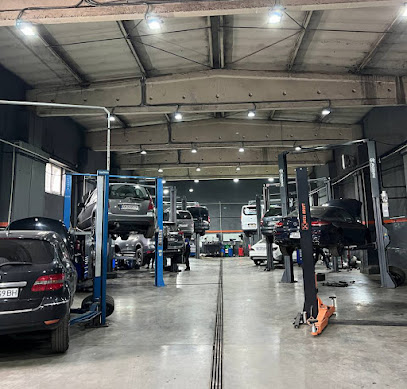Mercedes-Benz is one of the most famous car brands in the world, combining luxury, innovation and perfect design. Since the company’s foundation, its models have undergone significant changes in style, from classic forms to futuristic concepts. Let’s consider how the Mercedes-Benz design developed and what trends influenced its formation.
The first models and their design
The history of Mercedes-Benz design began at the end of the 19th century. One of the first production cars was the Mercedes 35 PS (1901), which laid the foundations for modern automotive engineering. Its features:
- Open cabin with large wooden wheels.
- Extracted body with a long hood to accommodate the engine.
- Minimalistic design without the headlights and radiator grille we are used to.
In the 1920s, the Mercedes-Benz Typ S and Typ 770 appeared
- Refined body lines.
- Large chrome radiator grilles.
- Streamlined shape for improved aerodynamics.
In the 1930s, Mercedes-Benz created a series of cars that combined elegance and power. For example, Mercedes-Benz 540K had an elongated body, smooth lines and a luxurious interior that became a symbol of prestige.
Design in the post-war period
After World War II, Mercedes-Benz focused on resuming production and improving the design. The main changes affected:
- The appearance of closed bodies – the models became more practical and comfortable.
- The use of streamlined shapes – the design became more sophisticated and technological.
- The introduction of the “star in a capsule” radiator grille, which became the brand’s signature feature.
Among the iconic models of this period is the Mercedes-Benz 300 SL Gullwing (1954), famous for its “sports gullwing” door. Also in the 1960s, the W111 series appeared, which started the trend for horizontal headlights.
Revolutionary changes in the 80s and 90s
In the 80s and 90s, the design of Mercedes-Benz changed significantly:
- Cars became more square and strict (for example, W124).
- Plastic and aluminum elements were actively used.
- Aerodynamics were improved, which helped reduce air resistance.
- New safety technologies were introduced, which affected the shape of the body.
Among the iconic models is the Mercedes-Benz S-Class (W140), which set new standards of luxury. During this period, the company also began to introduce new design solutions, such as integrated bumpers and soft body lines.
Modern trends in Mercedes-Benz design
Since the early 2000s, the design of Mercedes-Benz cars has become even more dynamic and sophisticated. Key trends:
- Smooth and curved body lines, giving the car elegance.
- LED lighting, which has become not only a functional but also an aesthetic element.
- Large radiator grilles with the logo, emphasizing the brand image.
- Integration of digital technologies into design – touch panels, holographic displays.
Mercedes-Benz is also actively developing electric models, in particular, the EQS, representing a new era of automotive design. It has flowing shapes, a fully digital dashboard and innovative materials.
The influence of design on the popularity of models
The design of a car plays a key role in its popularity. Thanks to the harmonious combination of style, technology and tradition, Mercedes-Benz remains one of the most influential brands in the world. The main factors that make Mercedes-Benz design attractive:
- Iconic features – a recognizable radiator grille, stylish headlights and graceful body shapes.
- Adaptation to new technologies – integration of electric motors, autonomous control.
- Luxurious materials in the interior – use of wood, leather and metal accents.
- Safety and ergonomics – convenient arrangement of controls, intuitive interface.
In addition, Mercedes-Benz design is closely linked to emotions. The brand creates cars that are not only efficient, but also aesthetically pleasing to their owners.
Conclusion
The evolution of Mercedes-Benz design demonstrates how the company skillfully combines tradition with innovation. From the first classic models to modern electric cars, the brand has always been ahead of its time. It is the unique approach to design that makes Mercedes-Benz cars desirable among car enthusiasts around the world. In addition, the company continues to experiment with new shapes, materials and technologies, which allows it to remain a leader in the field of automotive design.




































 Request a Call
Request a Call  Plot Route
Plot Route  Reviews on Google
Reviews on Google